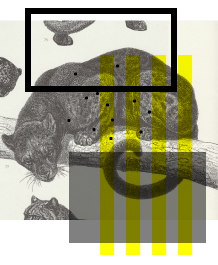Friedensreich Hundertwasser
Irinaland over the Balkans
Friedensreich Regentag Dunkelbunt Hundertwasser (December 15, 1928 – February 19, 2000) was an Austrian artist (who later took on New Zealand citizenship). Born Friedrich Stowasser in Vienna, he became one of the best-known contemporary Austrian artists, although controversial, by the end of the 20th century.
Life
Hundertwasser's father Ernst Stowasser died three months after Hundertwasser's first birthday. The Second World War was a hard time for Hundertwasser and his mother Elsa, as she was Jewish. They avoided persecution by posing as Christians, a credible ruse because Hundertwasser's father had been a Catholic. To remain inconspicuous, Hundertwasser joined the Hitler Youth.
Hundertwasser developed artistic skills very early. After the war, he spent three months at the Academy of Fine Arts in Vienna. At this time he began to sign his art as Hundertwasser instead of Stowasser. He left to travel, using a small set of paints he carried at all times to sketch anything that caught his eye. In Florence he met the young French painter René Brô for the first time; they became lifelong friends. Hundertwasser's first commercial painting success was in 1952-3 with an exhibition in Vienna.
His adopted surname is based on the translation of "sto" (the Slavic word for "one hundred") into German. The name Friedensreich has a double meaning as "Peaceland" or "Peacerich" (in the sense of "peaceful"). The other names he chose for himself, Regentag and Dunkelbunt, translate to "Rainy day" and "Darkly multicoloured". His name Friedensreich Hundertwasser means, "Peace-Kingdom Hundred-Water".
Hundertwasser married Herta Leitner in 1958 but they divorced two years later. He married again in 1962 to the Japanese artist Yuko Ikewada but she divorced him in 1966. By this point he was very popular with his art.
He moved into architecture from the early 1950s. Hundertwasser also worked in the field of applied art, creating flags, stamps, coins, and posters. His most famous flag is the Koru Flag. As well as postage stamps for the Austrian Post Office, he also designed stamps for the Cape Verde islands and for the United Nations postal administration in Geneva on the occasion of the 35th anniversary of the Universal Declaration of Human Rights.
Hundertwasser was buried in New Zealand after his death at sea on the RMS Queen Elizabeth 2 in 2000, at the age of 71.
Artistic style and themes
Hundertwasser's original and unruly artistic vision expressed itself in pictorial art, environmentalism, philosophy, and design of facades, postage stamps, flags, and clothing (among other areas). The common themes in his work utilised bright colours, organic forms, a reconciliation of humans with nature, and a strong individualism, rejecting straight lines.
He remains sui generis, although his architectural work is comparable to Antoni Gaudí (1852–1926) in its use of biomorphic forms and the use of tile. He was also inspired by the art of the Vienna Secession, and by the Austrian painters Egon Schiele (1890–1918) and Gustav Klimt (1862–1918).
He was fascinated by spirals, and called straight lines "the devil's tools". He called his theory of art "transautomatism", based on Surrealist automatism, but focusing on the experience of the viewer, rather than the artist. This was encapsulated by his design of a new flag for New Zealand, which incorporated the image of the Koru a spiral shape based on the image of a new unfurling silver fern frond and symbolizing new life, growth, strength and peace according to the Māori people.
Images: hundertwasser.com. Text source: Wikipedia.

